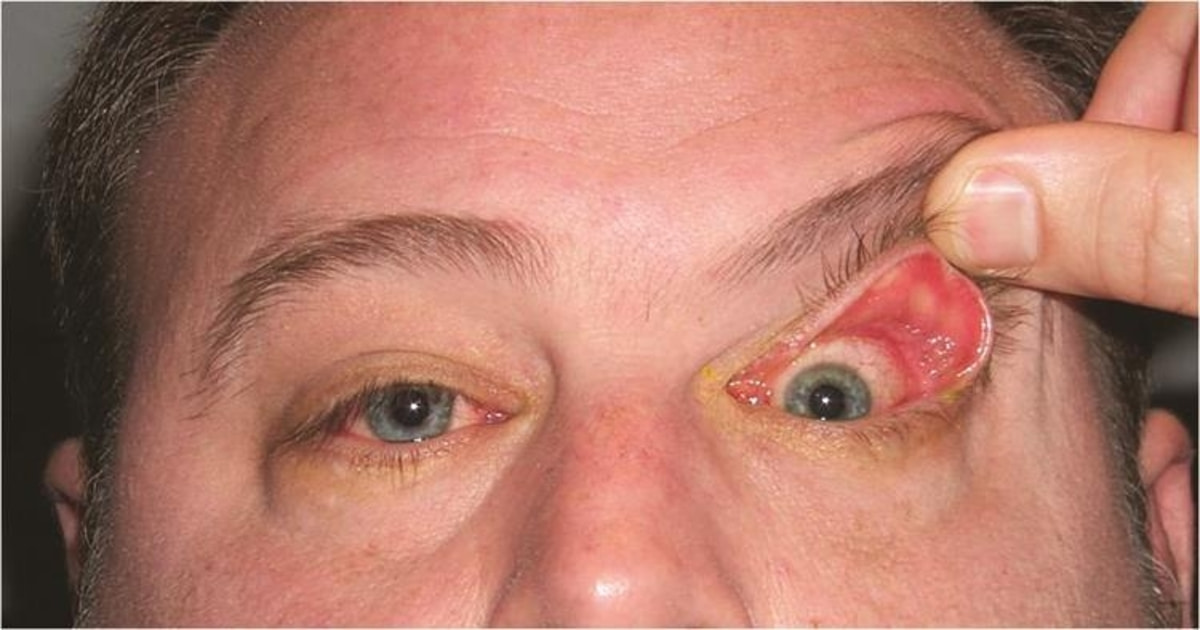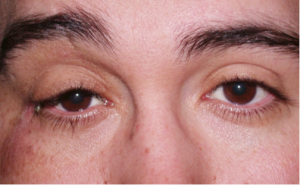
Frequently in our practice a patient presents with chronic redness, irritation and a discharge from one eye. “You snore at night and sleep on your right side.” patient answers,”How on earth do you know that?!”
What is Floppy Eye Lid Syndrome?
Floppy eyelid syndrome (FES) is considered a common and under-diagnosed eyelid syndrome. FES is characterized by a loose or “floppy” eyelid that easily contorts or everts without spontaneously returning to its normal shape. Typical presenting symptoms include tearing, irritation, photosensitivity, and foreign body sensation in the eye.
Who develops Floppy Eye Lid Synrome
Studies suggest that 98% of patients with FES are male and 57% of patients with FES suffer from Obstructive Sleep Apnea.
What is Sleep Apnea
This is when you stop breathing while asleep or have almost no airflow. It combines the Greek roots “a,” which means “not” and “pnea,” which refers to breathing. Combined, it means “breathless.” Sleep apnea is a potentially serious sleep disorder. If you snore loudly and feel tired even after a full night’s sleep, you might have sleep apnea.
The main types of sleep apnea are:
- Obstructive sleep apnea (OSA), which is the more common form that occurs when throat muscles relax and block the flow of air into the lungs
- Central sleep apnea (CSA), which occurs when the brain doesn’t send proper signals to the muscles that control breathing
- Treatment-emergent central sleep apnea, also known as complex sleep apnea, which happens when someone has OSA — diagnosed with a sleep study — that converts to CSA when receiving therapy for OSA
Obstructive sleep apnea
Obstructive sleep apnea occurs when the muscles that support the soft tissues in your throat, such as your tongue and soft palate, temporarily relax. When these muscles relax, your airway is narrowed or closed, and breathing is momentarily cut off.


This causes excessive snoring and forces them to frequently awaken and turn to sleep on their stomach or side. As a result, their face is pressed onto the pillow, mechanically stretching and pulling open the eyelid, leading to chronic eye irritation and drooping of the eyelid(s).
How is Floppy Eye Lid Syndrome treated?
Regarding the eyes, patients can use metal shields to cover their eye(s) while sleeping to reduce the mechanical trauma. Medications can be tried to lessen the eye irritation, and there are surgeries which can be performed to tighten the eyelid and/or raise it to correct the drooping. However, unless the underlying obstructive sleep apnea is addressed, the condition will continue.
How does one get checked for Sleep Apnea?
You get booked for a sleep study, in a sleep lab or by a monitor at home. These studies determine if and how often your breathing pauses for a significant period of time while sleeping. Remarkably, people with obstructive sleep apnea may have hundreds of episodes each night in which they stop breathing for 15 seconds or longer.
Why is it important to diagnose and treat OSA?
Obstructive sleep apnea reduces oxygen flow to all parts of the body. This can lead to high blood pressure, heart failure, arrhythmias, and many other potentially fatal systemic diseases. In addition, the poor quality of sleep has effects on daytime performance at work and other activities. Management of the condition always starts with diet, exercise, and weight loss. Once diagnosed, it can be treated with continuous positive airway (CPAP) masks and/or mouth and nose pieces to prevent collapse of the airway while sleeping. Treated patients sleep more soundly, feel better, and are healthier. Often, once the sleep apnea is treated, the changes seen on the eyelids will slowly revert to normal without the need for surgery.
Patient seen before and after treatment of obstructive sleep apnea with CPAP device. Note the improvement in position and appearance of the right upper eyelid.


For further information Fourie and Associates can be contacted. Fourie & Associates Clinical Technology Group is a team of experienced technologists with advanced sleep facilities in Cape Town, Johannesburg and Pretoria. They help patients understand, diagnose and treat sleep disorders such as sleep apnea using latest technology and expert advice to combat fatigue and daytime sleepiness.
